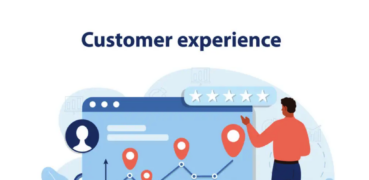Omni-Channel CX: Meeting Customers Where They Are

In today’s hyper-connected world, customers interact with brands across multiple channels—websites, social media, email, chat, mobile apps, and even in-store visits. For small teams and bootstrapped entrepreneurs, creating a seamless and consistent experience across all these touchpoints is critical for building trust and driving growth. This is where Omni-Channel Customer Experience (CX) comes into play.
In this guide, we’ll break down what omni-channel CX is, why it matters, and how small businesses can implement it effectively to engage customers at every stage of their journey.
What is Omni-Channel Customer Experience?
Omni-channel CX is the practice of providing customers with a seamless, integrated experience across all channels and devices. It ensures that interactions feel consistent and connected—whether a customer is browsing your website, engaging on social media, chatting with support, or visiting your physical store.
Omni-Channel vs. Multi-Channel: What’s the Difference?
- Multi-Channel CX: Engages customers on multiple channels, but these channels operate independently.
- Omni-Channel CX: Connects all channels, providing a unified experience. Data and interactions flow seamlessly between channels.
Example:
- Multi-Channel: A customer sees an Instagram ad but has to start from scratch when visiting the website.
- Omni-Channel: A customer clicks on an Instagram ad and is directed to a personalized product page on the website.
Why Omni-Channel CX Matters for Small Teams
1. Increases Customer Engagement and Satisfaction
Customers expect convenience. Meeting them on their preferred channels creates a frictionless experience, boosting satisfaction.
2. Builds Customer Loyalty
Consistent and seamless interactions foster trust and encourage repeat business.
3. Drives Higher Sales and Conversions
According to studies, companies with strong omni-channel strategies retain an average of 89% of their customers, compared to 33% for companies with weak omni-channel engagement.
4. Levels the Playing Field
For small businesses, an omni-channel strategy can compete with larger brands by offering a more personalized and connected experience.
Key Components of a Successful Omni-Channel CX Strategy
1. Customer-Centric Mindset
Start with understanding your customers’ behaviors, preferences, and expectations across all channels.
Action Step:
- Map out your customer journey to identify key touchpoints.
- Use surveys or feedback tools to understand which channels your audience prefers.
2. Unified Customer Data
A seamless experience requires collecting and integrating data from every customer interaction.
Action Step:
- Implement a Customer Relationship Management (CRM) system to centralize customer data.
- Use analytics tools to track customer behavior across channels.
Tools:
- HubSpot CRM (for customer data integration)
- Google Analytics (for multi-channel tracking)
3. Consistent Brand Messaging
Ensure your brand’s voice, visuals, and messaging remain consistent across all platforms.
Action Step:
- Create brand guidelines covering tone, design, and messaging.
- Customize content for each channel without losing consistency.
Example:
A small apparel brand maintains the same casual tone and color scheme on its website, Instagram, and email newsletters.
4. Channel Integration
Your channels should work together, not in silos. Information should flow freely to deliver a connected experience.
Action Step:
- Integrate your e-commerce platform with email marketing, social media, and customer support tools.
Tools:
- Shopify + Klaviyo for integrated email marketing
- Zendesk for multi-channel customer support
5. Personalized Interactions
Tailor content and communication based on customer data to enhance relevance.
Action Step:
- Use browsing and purchase history to offer personalized recommendations.
- Send cart abandonment emails or targeted promotions.
Example:
A customer browsing shoes on your website later receives an Instagram ad featuring those exact products.
6. Real-Time Customer Support
Customers expect instant support across channels—email, live chat, social media, and more.
Action Step:
- Implement live chat on your website and integrate it with your social media messaging.
- Use chatbots to handle FAQs and escalate complex issues to a human agent.
Tools:
- Intercom for live chat and automated support
- Facebook Messenger Integration for instant social responses
Omni-Channel CX in Action: Real-World Examples
1. Small Online Retailer
Challenge: Increasing cart abandonment rates.
Solution:
- Integrated website, email, and social media to send cart reminders.
- Personalized product recommendations based on browsing history.
Result:
Higher conversion rates and reduced cart abandonment.
2. Digital Marketing Agency
Challenge: Disconnected communication across email, calls, and social media.
Solution:
- Implemented a unified CRM to track all client interactions.
- Standardized messaging across LinkedIn, email campaigns, and webinars.
Result:
Improved client retention and project alignment.
3. Local Café with Online Orders
Challenge: Managing in-store and online orders seamlessly.
Solution:
- Integrated online ordering with in-store POS.
- Used SMS to notify customers when orders were ready.
Result:
Faster service and higher customer satisfaction.
How Small Teams Can Implement Omni-Channel CX
Step 1: Identify Relevant Channels
Focus on channels where your customers are most active. For small teams, this could include:
- Website and mobile app
- Social media (Instagram, Facebook, LinkedIn)
- Email and SMS marketing
- Live chat and chatbots
Step 2: Integrate Your Tools
Choose software that integrates smoothly to avoid managing siloed systems.
- CRM (HubSpot, Zoho) for unified customer data.
- E-commerce (Shopify, WooCommerce) connected to email marketing tools.
- Customer Support (Zendesk, Freshdesk) with live chat and social media messaging.
Step 3: Personalize Customer Interactions
Use customer data to deliver personalized experiences.
- Product recommendations
- Targeted promotions
- Loyalty rewards
Step 4: Monitor and Optimize
Track performance across all channels and make data-driven improvements.
- Monitor KPIs like customer satisfaction (CSAT), Net Promoter Score (NPS), and conversion rates.
- Collect customer feedback to refine touchpoints.
Best Practices for Omni-Channel CX Success
- Start Small, Scale Gradually: Focus on a few key channels before expanding.
- Ensure Mobile Optimization: Most customers interact via mobile—optimize for mobile-first experiences.
- Maintain Consistency: Align messaging, branding, and customer data across every channel.
- Be Responsive: Offer real-time support and respond quickly to customer inquiries.
- Leverage Automation Wisely: Automate repetitive tasks but keep human support available for complex issues.
Conclusion
Omni-channel CX is about meeting customers where they are and delivering a seamless, personalized experience across every touchpoint. For small teams and bootstrapped entrepreneurs, this strategy can drive customer loyalty, boost engagement, and increase sales.
By integrating your channels, personalizing customer interactions, and maintaining consistent messaging, you can build stronger relationships and stand out from the competition.
Ready to create a seamless customer experience? Start integrating your channels today and watch your business grow.
Tags: Omni-Channel CX, Customer Experience, Small Business Growth, Customer Engagement, Marketing Strategy







